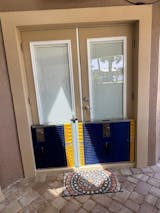Floods are natural disasters that can be frightening and overwhelming for both adults and children. While adults are usually responsible for ensuring the safety and preparedness of their households, it's essential to involve children in flood preparedness activities to help them understand the importance of being ready for emergencies and to reduce their anxiety about these events. In this article, we'll explore ways to engage children in flood preparedness activities and make the topic less intimidating, regardless of whether you live in flood-prone areas like Hawaii, Alaska, or Michigan.
Open Communication
The first step in involving children in flood preparedness is open and age-appropriate communication. Explain to them what floods are and why preparedness is crucial. Use simple language and avoid frightening details. Encourage questions and provide honest answers. Reassure them that you have a plan in place to keep them safe.
Create a Family Emergency Plan
Involve your children in creating a family emergency plan. Make it a fun and interactive experience by using colorful charts, stickers, or drawings. Discuss evacuation routes, meeting points, and emergency contacts. Assign age-appropriate roles and responsibilities, so children feel like active participants in the plan.

Practice Evacuation Drills
Hold regular evacuation drills to familiarize children with the process. These drills can be a great opportunity to teach them how to use flood barriers, flood gates, or other protective measures if you have them. Make it a game by timing the drills and rewarding their efforts. This practice helps reduce fear and anxiety during real emergencies.
Storytelling and Education
Utilize storytelling to explain flood preparedness concepts. Create fictional characters or use real-life examples from flood-prone areas like Hawaii, Alaska, or Michigan. Books and educational videos can be excellent resources to introduce flood safety in a kid-friendly way.
Build a Flood Kit Together
Assemble an emergency flood kit with your children. Let them choose some of the items, such as snacks, a favorite toy, or a comforting item like a blanket. Explain the purpose of each item in the kit and emphasize its importance in ensuring their comfort and safety during a flood.
Art and Crafts
Engage children in arts and crafts activities related to flood preparedness. Have them create posters, drawings, or dioramas that depict how to stay safe during a flood. This creative approach helps reinforce important safety messages while allowing children to express their thoughts and fears.

Visit Local Flood Preparedness Events
Many communities, especially in flood-prone areas like Hawaii, Alaska, and Michigan, organize local flood preparedness events and workshops. Take your children to these events to learn about flood barriers, flood gates, and other preventive measures firsthand. Meeting emergency responders and seeing their equipment can demystify the process and make it less intimidating.
Encourage Questions and Discussion
Maintain an open-door policy for questions and discussions about floods and preparedness. Children may have concerns or fears that they need to express. Listen attentively, validate their feelings, and provide reassurance.
Conclusion
Involving children in flood preparedness activities not only empowers them with essential life skills but also reduces the anxiety and fear associated with these natural disasters. By using child-friendly communication, interactive activities, and educational resources, you can make flood preparedness a positive and engaging experience for your children, regardless of where you live, be it in Hawaii, Alaska, Michigan, or any other flood-prone region. Remember that a well-prepared family is a safer and more resilient family, and that includes the youngest members.
€779,00
Dam easy® para evitar la inundación de la represa. Las inundaciones son cada vez más frecuentes en todo el mundo.Lo que solía ser un fenómeno centenario se ha convertido en una tendencia estacional que los propietarios deben afrontar. … Read MoreEl dique de contención de inundaciones.




















